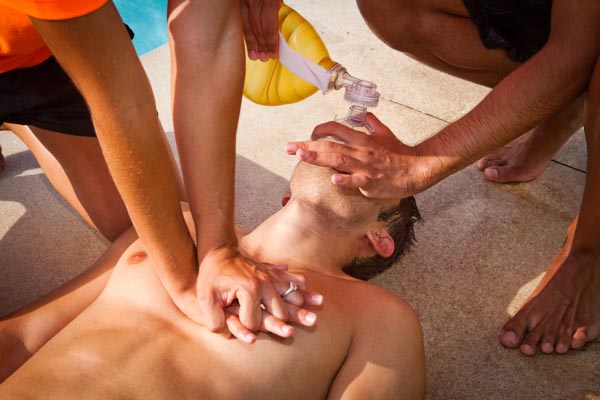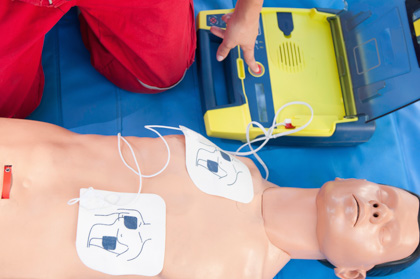CPR #4
Online Course Samples
Sample #1
Sudden Cardiac Arrest
Like every muscle in your body, the heart muscle moves when stimulated by an electrical impulse. The heart, however, does not rely on your brain to send these impulses like all other muscles; it creates its own electrical current from nodes located inside the heart. The sinoatrial node, located in the upper right portion of the heart, is primarily responsible for creating this impulse that then travels through conduction pathways through the muscle in an organized manner. As this impulse travels it stimulates the different…
More in course materials…
Sample #2
CPR Compression Techniques
- To perform compressions, position yourself at the patient’s side.
- Place the heel of one hand on the sternum in the center of the chest between the nipple line.
- Place your other hand on top of the other, interlocking your fingers.
- Slightly pull your fingers back so that only the heel of your hand is on the patient’s chest.
- Lean over the patient so that your shoulders are directly over your hands and lock your elbows.
- Begin by pushing straight down onto the chest hard and fast. Press down approximately at least two inches (5 cm).
- Lift up, bringing your weight completely off the chest but keeping the hands in place. Let the chest completely rise.
- Continue to do this at a rate of 100 per minute.

It is important to ensure that your compressions are hard and fast. With each compression you are building pressure inside the chest to help push blood to vital organs. Compressions that are too shallow or too slow do not build the necessary pressure and will not improve the chance of survival. It is also important to release the pressure on the chest so that the heart can refill with blood before your next compression. In review:
- The hard and fast compression move the chest downward approximately 2 inches to push blood to vital organs.
- The release of pressure refills the heart with blood and is accomplished by letting the chest completely rise.
Some rescuers have been trained to provide ventilations to a patient after 30 compressions. If you have...
More in course materials…
Sample #3
Automated External Defibrillators

What are They?
Automated External Defibrillators, or AED, is a device that determines if a patient in SCA needs an electrical shock and then delivers that shock. Recent research has shown that the use of an AED nearly doubles the chance of survival in SCA. They are safe and easy to use and should be used whenever possible during SCA.
How to Use Them
Once you have determined in your assessment that a patient appears to be suffering from SCA (unconscious, unresponsive, and displays no signs of life), you should attempt to find an AED while calling for help. When returning to the patient, use the AED as soon as it is available. The first step in using an AED is to turn...
More in course materials…

